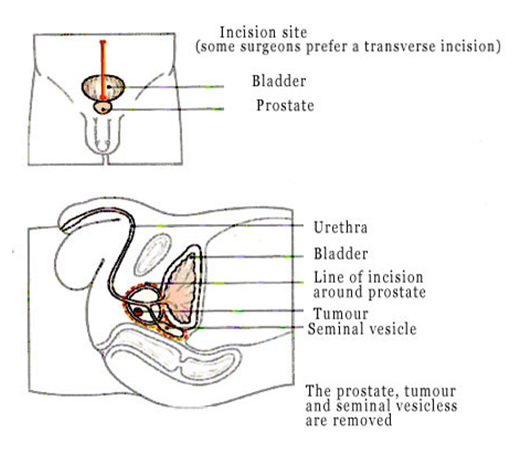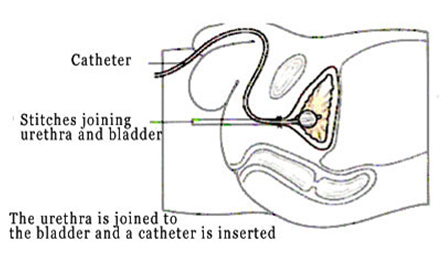Radical ProstatectomySurgery may optimally treat prostate cancer if it has not spread outside the prostate. Surgery can be performed laparoscopic, retropubic or perineal. It involves the removal of the entire prostate and attached seminal vesicles, along with a small part of the bladder next to the prostate. Nerve sparing, whereby the surgeon identifies and leaves intact nerves either side of the prostate, can lower the risk of adverse affects following prostatectomy. Along with risks associated with any major surgery, adverse effects include impotence, urinary incontinence and urethral stricture. 

The cause of obstruction is usually a developmental defect of the muscle in this region. It can be due to other causes also, such as an abnormal kidney artery in this region producing mechanical obstruction. How is it treated? The treatment is by surgery. This can be done either by open surgery, with its accompanying morbidity of a 15 cm wound or in some cases, by endoscopic techniques ( endopyelotomy). By far, the best results are obtained by open surgical techniques. Now laparoscopy can do the same repair with the same results but avoiding all the morbidity of the open surgical wound and is considered by many Urologists as the gold standard Steps of repair:
While open surgery requires either a large abdominal or flank incision, minimally invasive approaches involve 3-4 keyhole incisions in the abdomen. Most patients with adrenal tumors who are candidates for open surgery are also excellent candidates for a robotic / laparoscopic approach. These minimally invasive approaches have become the standard of care for most adrenal tumors. Patients with very large tumors or tumors invading surrounding structures e.g. vena cava, kidney, liver, bowel may be best served by an open approach due to the extent and need for adjacent organ resection. |

+91 - 95661 39630
+91 - 94441 68963



